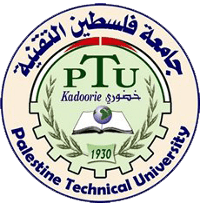Please use this identifier to cite or link to this item:
https://scholar.ptuk.edu.ps/handle/123456789/645 cc-by
| Title: | Characterization of alternative NADH dehydrogenases in the respiratory chain of Toxoplasma gondii as a novel drug targets |
| Other Titles: | Parasitic Alternative NADH Dehydrogenases as Promising Drug Targets |
| Authors: | Saleh A |
| Keywords: | Toxoplasma gondii, RT-PCR, Electron Transport Chain, Alternative NADH Dehydrogenase, HDQ |
| Issue Date: | 15-Nov-2006 |
| Publisher: | University of Goettingen, Germany |
| Abstract: | The single mitochondrion of Toxoplasma gondii generates a membrane potential in the proliferative tachyzoite stage. However, its contribution to energy metabolism in dormant bradyzoites is less clear. The steady state mRNA level of 11 nuclear genes coding for key subunits of the electron transport chain was quantified by quantitative real-time RT-PCR and compared in tachyzoite versus bradyzoites. No significant difference on the transcript levels between both stages was found when normalized to the expression of β-tubulin. To facilitate expression studies of energy-associated components, the open reading frame of the following genes was determined and verified by RT-PCR: (i) alternative NADH dehydrogenase I and II; (ii) flavoprotein subunit of succinate dehydrogenase; (iii) cytochrome c1; and (iv) β-subunit of ATP synthase. These genes display highest similarities to orthologs in Plasmodium. They are single copy, nuclear encoded genes with their coding sequence interrupted by multiple introns. The N-terminus of the precursor proteins has characteristics of a mitochondrial targeting pre-sequence. The open reading frame of the five genes was fused with a c-myc tag and brought under control of a tetracycline regulatable promoter. These plasmids were stably transfected into the T. gondii TATi-1 line. Co-localization studies showed that the encoded proteins are expressed and transported correctly into the mitochondrion. Expression and localization of TgNDH2-I and TgATP-β were confirmed by mouse antiserum raised against their recombinant proteins. The over-expression of these proteins has no influence on the growth rate of the parasites. The T. gondii genome predicts the presence of typical components of the respiratory chain, except complex I (NADH:Q reductase). Instead, two isoforms of a single subunit, non-proton pumping alternative NADH dehydrogenases, TgNDH2-I and TgNDH2-II, have been identified. The total DNA sequences encompass 2793 and 7686 base pairs and contain open reading frames of 1875 and 1974 base pairs, respectively. The respective genes code for a precursor polypeptides of 618 and 657 amino acid residues with a calculated MW of 67 and 72 KDa, respectively. The open reading frames encoding the isoforms show 58% nucleotide sequence identity, and their gene products share 43% amino acid sequence identity. VIII The fact that alternative (type II) NADH dehydrogenases of T. gondii and P. falciparum are absent in mammalian cells makes them promising antimicrobial drug targets. The quinolone-like compound 1-hydroxy-2-dodecyl-4(1)quinolone (HDQ) was recently described as a high affinity inhibitor of fungal alternative NADH-dehydrogenases in enzymatic assays, probably by interfering with the ubiquinol binding site of the enzyme. In this study, HDQ effectively inhibited the replication rate of T. gondii in tissue culture. The IC50 of HDQ was determined for T. gondii with two independeant types of growth assays at ~2-8 nM. An important feature of the HDQ structure is the length of the alkyl site chain at position 2. Derivatives with alkyl site chains of C6, C8, C12 (HDQ) and C14 all displayed excellent anti-T. gondii activity, while a C5 derivative completely failed to inhibit parasite replication. Due to the structural similarities, it is most likely that 1- hydroxy-2-alkyl-4(1)quinolones compete with ubiquinones for the same binding site in alternative NADH dehydrogenases. HDQ treatment of T. gondii-infected cultures resulted in an induction of bradyzoite differentiation. This effect is well known from other compounds which also inhibit parasite replication and simultaneously induce the expression of bradyzoite specific genes in T. gondii. A combined treatment of T. gondiiinfected cells with HDQ and the antimalarial agent atovaquone, which blocks the ubiquinol oxidation site of cytochrom b in complex III, resulted in a strong synergism. An interference of the mitochondrial ubiquinone/ubiquinol cycle at two different locations appears thus to be a highly effective strategy to inhibit parasite replication. HDQ and derivatives represent particularly in combination with atovaquone promising compounds with high potential for anti-malarial and anti-toxoplasmal therapy. In the background of the regulatable additional copies, the endogenous genes were targeted for disruption by homologous recombination to generate inducible knock-out mutants. Depletion of TgNDH2-I in a conditional knock-out mutant has neither influence on the replication rate nor on the in vitro stage conversion, suggesting that TgNDH2-II activity is sufficient for intracellular development. However, slight upregulation of TgNDH2-II has been shown on the steady state mRNA in the knock-out mutants compared to the wild type parasites. Moreover, TgNDH2-I depleted parasites display a strongly increased susceptibility for HDQ treatment, where 1 nM HDQ was sufficient to completely inhibit parasite replication. Taken together, we tempt to speculate that the over-expression of the second isoform i.e. TgNDH2-II compensates the loss of TgNDH2-I activity. |
| Description: | PhD thesis |
| URI: | https://scholar.ptuk.edu.ps/handle/123456789/645 |
| Appears in Collections: | PH.D |
Files in This Item:
| File | Description | Size | Format | |
|---|---|---|---|---|
| saleh A PhD Thesis.pdf | PhD Thesis | 2.39 MB | Adobe PDF |  View/Open |
Items in DSpace are protected by copyright, with all rights reserved, unless otherwise indicated.
